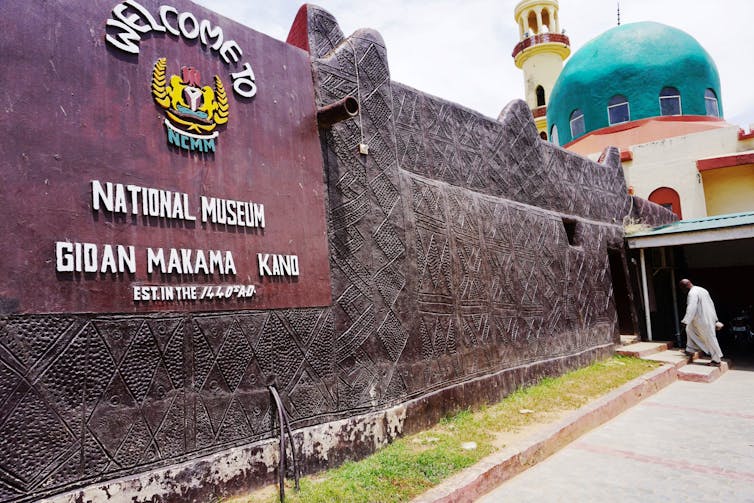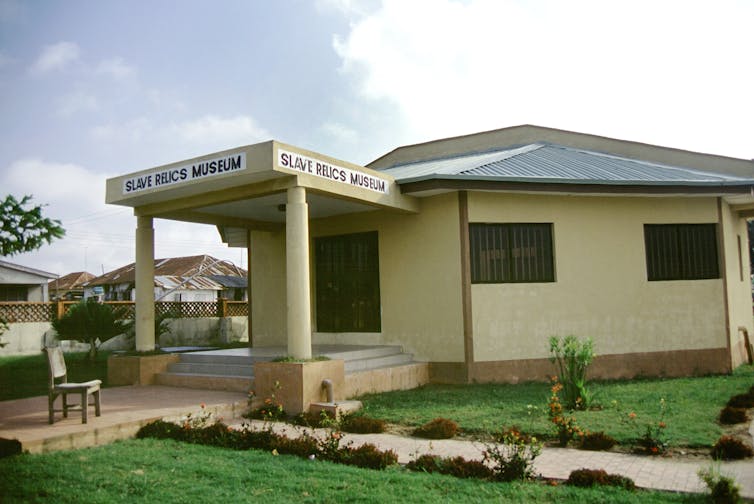
Faye Sayer, Manchester Metropolitan University
In many parts of the world, museums are considering how to present history through different lenses, rather than just representing colonial and imperialistic views of certain events, countries or whole continents.
The current museum presentations of exhibits and information about slavery – especially the transatlantic slave trade – are a stark example of colonisation that’s been spun through a white, eurocentric lens. Hence, it’s become a key part of the decolonisation debate.
Museums all over the world have struggled to move beyond presenting more than emotionally removed snapshots of the slave trade. Most of these halls are continuing a long tradition of disconnecting themselves and the public from personal and local stories of slavery. This makes them disconnected from community and public memories.
African museums are also guilty of this practice. The transatlantic slave trade was a 400-year period during which African people were stolen from their homes and shipped to colonial nations. It was complex and multi-faceted. But when presented by museums today, it is communicated as a singular and temporarily isolated event. African museums frame the transatlantic slave trade narratives from an economic perspective. Their narratives are built around economic drivers and the economic effects of slavery on African countries, and the countries that benefited from the trade.
In a recent study, I examined how slavery is presented in two Nigerian museums. One is Calabar’s Slave History Museum, which is government-funded; the other is the privately run Seriki Faremi Williams Abass Museum. In both museums, the dominant narrative about slavery is that the Europeans arrived; the slave trade developed; and then it was abolished.
Little attention is paid to the practice of slavery in the region before Europeans arrived in the 1440s. There’s little mention of how the practice persisted, even after the British outlawed the slave trade in its empire. There’s no mention of concerns about modern slavery in Nigeria.
This is an isolationist approach to a large, complex set of stories. When I spoke with local communities descended from victims of slavery, members strongly criticised government funded museums’ approach. They kicked against the museums’ failure to convey the complete, complex, and conflicting localised human story of the slave trade. They also wanted museums to reflect that slavery continues to have an impact on local communities today. Especially on the culture and identity of individuals and ethnic groups.
Official avoidance of history
Elsewhere in Nigeria, transatlantic slavery and the slave trade are largely absent from national or state museums, including the Nigerian National Museum in Lagos.
This official avoidance of the history of slavery and its accompanying acts of oppression and injustice could be linked to the colonial legacies of many of these museums. It may also be connected to wider political rhetoric that unsuccessfully urges Nigerians to forget such dark chapters. Of course, such avoidance is not limited to Nigeria – it’s a global trend of deliberate erasure. It has deep roots in imperialist and eurocentric agendas.
After independence in 1960, Nigeria’s heritage and past were used to enlighten and educate the public in national “official” histories. The aim was nation-building. Six decades later, it has culminated in the exclusion of the transatlantic slave trade from wider narratives of independence, colonial geography, and ethnic histories in Nigerian museums.

Colonial heritage narratives about Nigeria have not been amended throughout the years. These incorrect narratives linger, despite evidence that slavery and enslavement form the core of the country’s personal, local and cultural memories.
Official efforts have failed to consider community narratives and memories, thereby removing Nigerians from the centre of their own history and heritage. The result is that these museums are often perceived as locally irrelevant: there is a disconnect between the official narrative and the descendent community’s versions of the past.
One of the museums in my study, the Seriki Faremi Williams Abass Slave Museum in Badagry, was developed as a direct result of the gaps in official museums’ offerings.
Local collaboration is key
It is critical that museum professionals in Nigeria – and the rest of the world – begin to open up dialogue with diverse local communities. Museums must be immersed in people-centric local narratives. They have to also build trust with the communities in which they operate.
This collaboration will allow for the co-production of culturally relevant, personalised and empathetic narratives. Via this collaboration, the story of slavery and slave trade can be sensitively and accurately presented. It will also enable museums to highlight the unique cultural impact of slavery on specific localities, especially at the points of origin and final destination.
This approach could encourage the public and museums to question over-simplified stories of the past. It’s also a valuable way to support empathy with the past. This could enable the public to face uncomfortable and potentially personal truths about the slave trade and enslavement that move beyond victimisation and stereotypes.
By considering transatlantic slavery and slave trade through this lens, museums have the potential to connect people to the past, so communities might learn, reflect and heal.![]()
Faye Sayer, Senior Lecturer in Community Archaeology and Public History, Manchester Metropolitan University
This article is republished from The Conversation under a Creative Commons license. Read the original article.

